Search
Did you mean: Byzantium?
Search Results
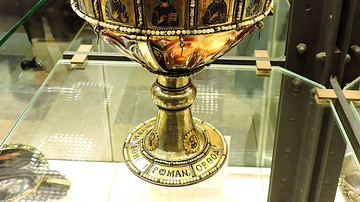
Image
Byzantine Chalice
A Byzantine chalice, c. 1070 CE. Made with a semi-precious stone body and gold stem, the cup is decorated with enamel plaques. (Treasury of Saint Mark’s, Venice)

Image
Byzantine Empire c. 626 CE
A map of the Byzantine empire c. 626 CE.
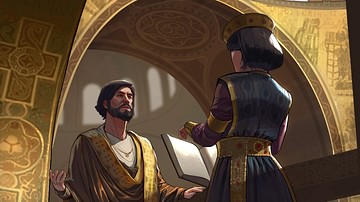
Image
Byzantine Discussion
Artist's impression of a discussion between a man and a woman in an ancient Byzantine church. Created by Amplitude Studios for the video game Humankind.
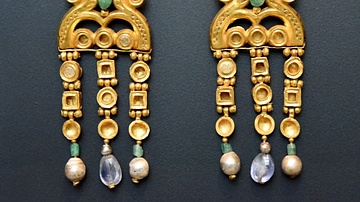
Image
Byzantine Gold Earrings from Egypt
These earrings show the skill and the quality achieved by Byzantine jewellers. They come from a treasure of 36 pieces found in Egypt (the treasure is shared between museums in London, Berlin, and New York), which at this time, was part of...

Image
Byzantine Church Pulpit from Petra
Byzantine church pulpit, found broken into pieces at its original location in the "Blue Chapel" on the northern ridge of the Petra city center, Jordan, dating from the 6th century. Petra was a Bishopric See in the Byzantine Empire. The pulpit...
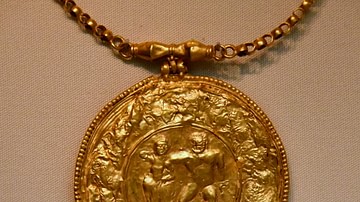
Image
Byzantine Medallion with Pagan Imagery
While Christianity was the state religion of the Byzantine Empire, pagan imagery remained popular. Knowledge of classical literature, which often portrayed the lives of pagan gods and heroes, was considered a sign of culture and good education...
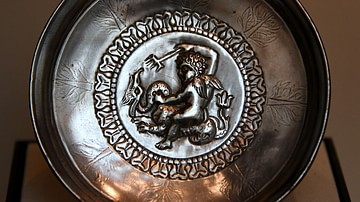
Image
Byzantine Silver Dish with Pagan Imagery
While Christianity was the state religion of the Byzantine Empire, pagan imagery remained popular. Knowledge of classical literature, which often portrayed the lives of pagan gods and heroes, was considered a sign of culture and good education...
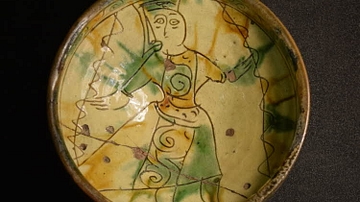
Image
Byzantine Bowl with Female Figure
This bowl, dating to the 14th-15th century CE, features a stylized figure of a woman. It is glazed on the inside, and partially on the outside. Made in Cyprus. Discovered in Cyprus. Measures 6.4 cm in height and 16.3 cm in diameter. (British...
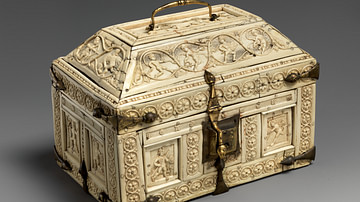
Image
Byzantine Ivory Casket
Made in Constantinople in the 11th century CE, this casket is made of ivory and bone, and has gilded copper mounts. Depicted are dancers waging mock battles and taming a panther. (Metropolitan Museum of Art, New York)
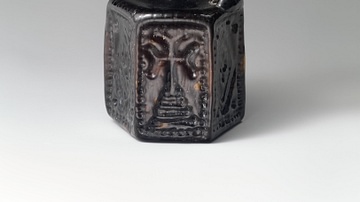
Image
Byzantine Hexagonal Jug
Created in the 6th or 7th century CE, this moulded glass jug measures 15.1 x 8.6 x 7.5 cm. This photo shows a stepped cross, representing one constructed at the site of Jesus' crucifixion by Thoedosius II. The relief designs were produced...